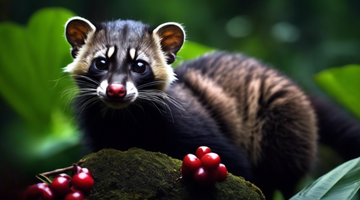What exactly is The Poop Coffee? Understanding the World of Kopi Luwak
由 Ankit Jagannath 上 Jun 01, 2024

Introduction: Beyond the Name, A Coffee Like No Other
At first glance, poop and coffee seem like words that shouldn't even be in the same book, let alone the same sentence. But in the exotic and pricey world of coffee, these terms combine to brew Kopi Luwak, one of the most exclusive cups you can get your hands on. This article aims to shed light on this special coffee and explain why it's so valued among coffee lovers. We're about to take a look at the no-fuss yet remarkable process that turns something as unusual as an animal's stomach activity into a top-notch coffee experience.
What Is Poop Coffee?
Poop coffee refers to a very distinctive kind of coffee. Thankfully, it doesn't come anywhere near actual poop in terms of appearance or smell. It stands out because its beans have been partially digested through the digestive system of the Asian palm civet. This process is what gives poop coffee its real name, Kopi Luwak. In Indonesia, where this coffee originates, Kopi translates to coffee, and Luwak is what the locals call the small animal responsible for creating it.
Whose Poop Produces The Poop Coffee?
Sometimes mistakenly called cat poop coffee or even confused with monkey poop coffee, Kopi Luwak is neither produced by domestic cats nor monkeys. The true producer is a wild animal known as the Asian palm civet. These civets are small nocturnal mammals native to the tropical forests of Southeast Asia. Civets are known for their discerning taste, choosing to eat only the ripest and sweetest coffee cherries.
How does Kopi Luwak compare to Regular Coffee?
Although Kopi Luwak starts from the same coffee cherries as your everyday brew, its journey from cherry to mug is far from the norm. Most coffee goes through picking, drying, and then roasting. But with Kopi Luwak, there's an extra step where the coffee cherries are eaten by civets and go through their digestive system. This natural fermentation inside the civet unlocks an extra level of flavour in the beans to make the coffee taste smoother and richer. It’s certainly an odd step in making coffee, and it might surprise people who are used to just regular beans or even other coffee alternatives, such as those made from soybeans.

